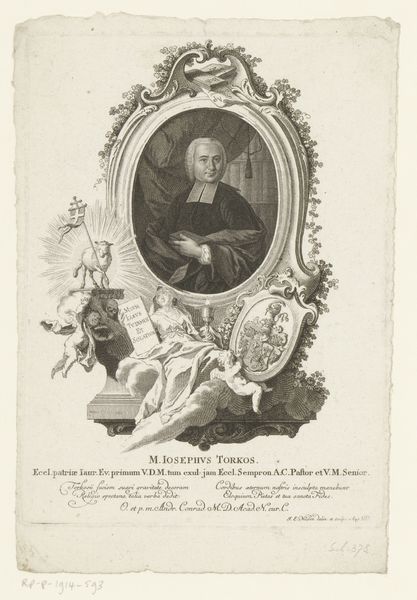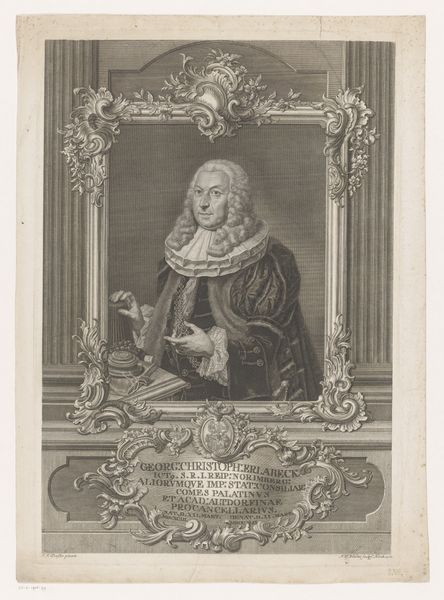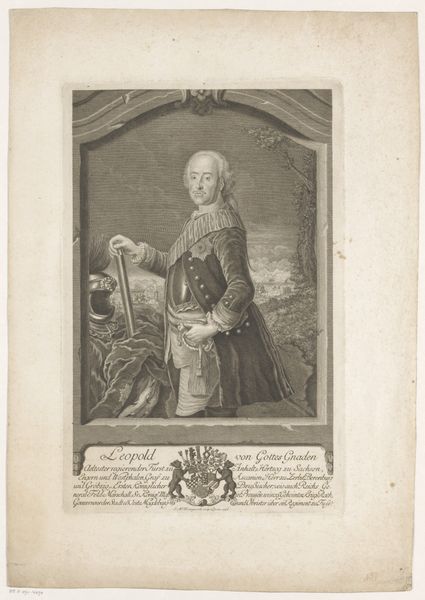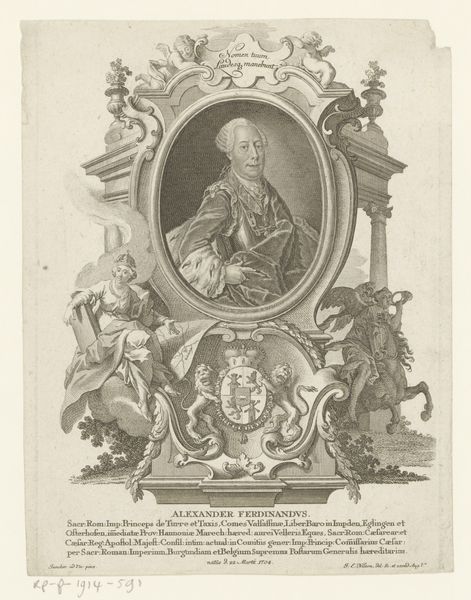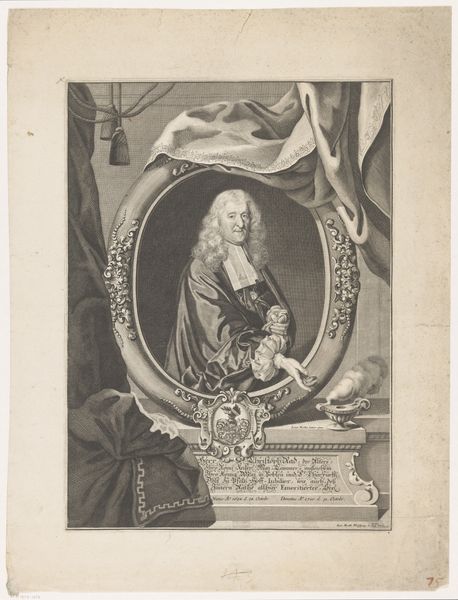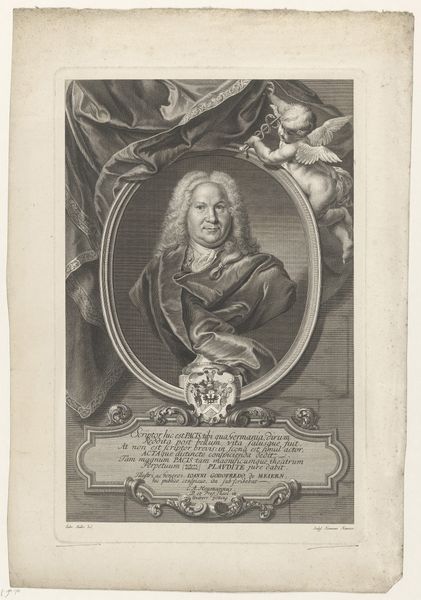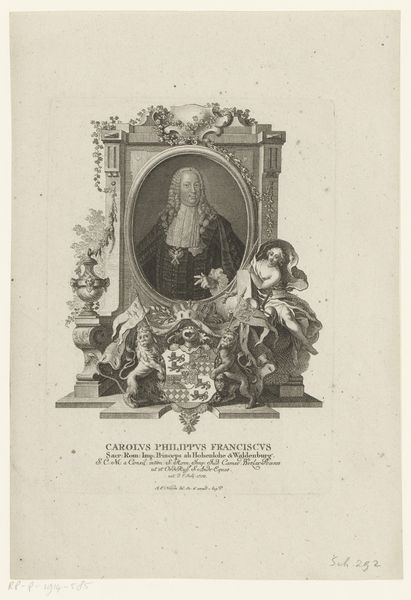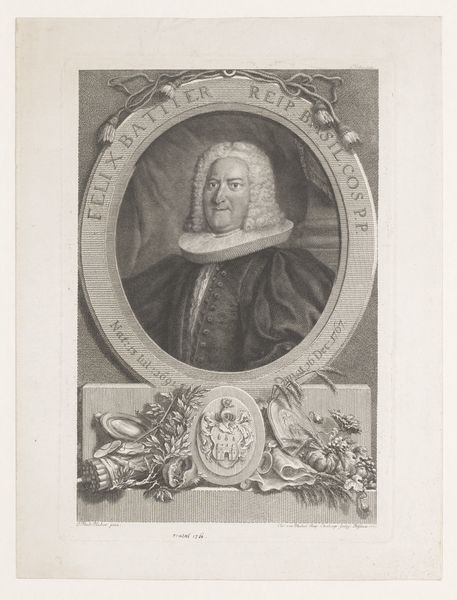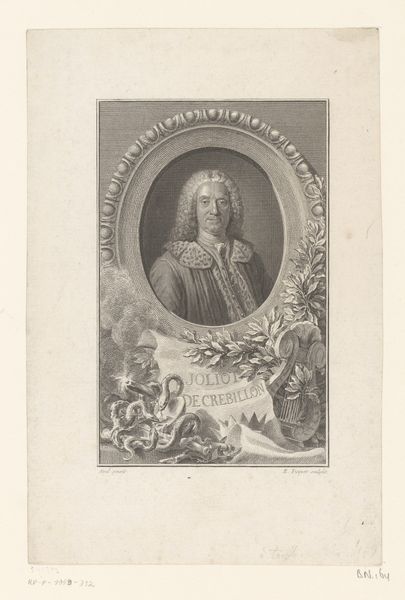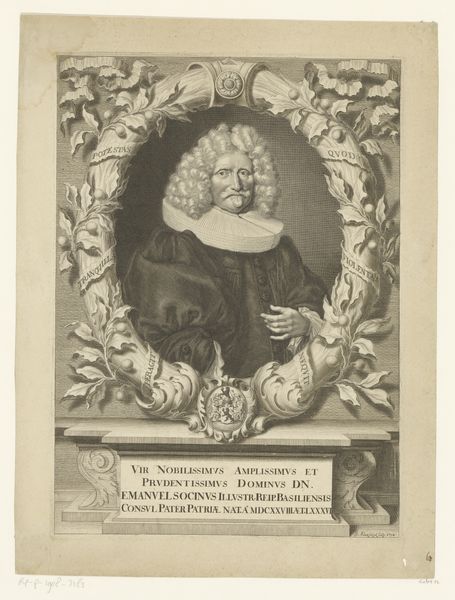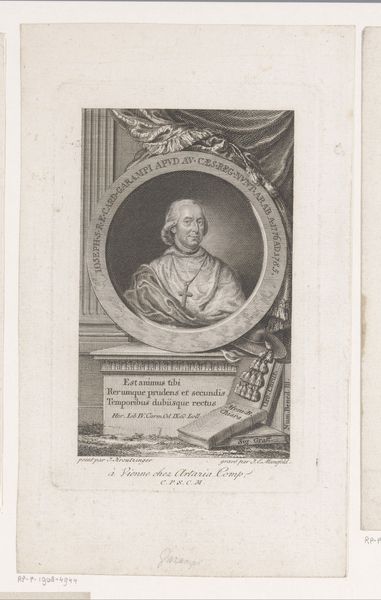
Dimensions: height 302 mm, width 204 mm
Copyright: Rijks Museum: Open Domain
Curator: Let’s have a look together at “Portret van David von Stetten,” an engraving made sometime between 1768 and 1788 by Johann Esaias Nilson. The piece is part of the Rijksmuseum's collection. What strikes you initially about it? Editor: There's a stiffness to it, almost like a carefully staged tableau. The ornate frame and the cherubs… it feels like an attempt to immortalize this man. Curator: It does have a very formal quality, doesn't it? Considering the time, portrait engravings like these often served a clear purpose. Beyond personal commemoration, they solidified social status and reinforced systems of power. David von Stetten, judging by the visual cues – the books, the ornate surroundings, the very serious demeanor – likely held a prominent position in society. Editor: Exactly, the way he’s positioned, elevated almost. And the cherubs add a religious element; they seem to indicate divine favor. Is it fair to suggest this kind of imagery naturalizes social hierarchy? Curator: Absolutely. The Baroque style, of which this engraving shows remnants, often depicted individuals as larger than life, sanctioned not only by earthly but divine authority. Think of it as carefully crafted visual propaganda. Engravings were also more accessible than paintings. Through printed portraits like this one, images of authority figures circulated more widely. Editor: So, we're not just looking at an individual's portrait but a statement about social standing that speaks to a broader audience. Looking at it today, though, I can't help but wonder about the cost of such public performance. Curator: That is an important point, the weight of public persona, then and now, warrants consideration, particularly when examining who had access to creating and controlling these images. Nilson's skill allowed Von Stetten to control and transmit a message, but we can see how that message aligns or misaligns with modern concerns. Editor: Looking closer, you know, it reminds us that portraiture, regardless of its medium, serves a very real and very human need for recognition and legacy. Curator: A human need entangled, of course, with the societal and cultural forces of its time. It invites questions about who gets remembered, how, and why.
Comments
No comments
Be the first to comment and join the conversation on the ultimate creative platform.
